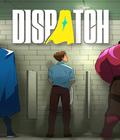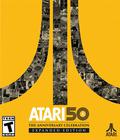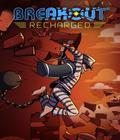Breakout is one of the titles that defined Atari's legendary status back in the beginning of the first video game boom period. The game was so good that over time, countless titles modified that core formula to create some very cool titles that employed their own clever twists along the way. As part of its Recharged series, Atari has given Breakout the Recharged treatment. The result is exactly what you'd expect, but whether that's enough is a different story.
For those who have never played a brick-breaking game, you navigate a paddle at the bottom of the screen, moving it left and right to hit an incoming ball. You deflect it to the top of the screen, where it runs into slowly descending bricks and destroys them. Most bricks can be destroyed in one hit, while others take multiple hits to destroy or produce an effect, like exploding on contact or producing a bullet that destroys you if it hits you. Bricks come in sets to constitute levels, and the game ends when the ball reaches the bottom of the screen.
There are four modes in Breakout: Recharged, where you can play the game in either solo or with a friend in co-op locally, where each player covers a specific side of the field. Classic mode is everything described previously, except you have three lives at your disposal. Recharged mode takes you down to one life but gifts you with special bricks that grant powers for a limited amount of time. Some powers include the ability to slow down time when the ball gets closer to the paddle, creating multi-ball situations, extending the size of the paddle, and automatically shooting a laser beam to get rid of bricks. As a nice balance between the two, there's Classic Recharged mode, which is the same as Recharged but gives you three lives instead of one. Each mode gives you a local and global leaderboard, so it keeps the old arcade mentality of replaying to climb the high score charts.
Aside from the endless parade of brick sets, you have Challenge mode, which presents 50 different scenarios and goals. Some are simple, like breaking all of the bricks in the field or hitting a certain brick quota. Others are more intense, like trying to break bricks while avoiding gunfire from a sea of turrets or surviving a level where the brick descent is sped up. They're all fun to take on if you feel adept at the genre, but unless you're chasing leaderboard times, don't expect to come back to it once they're all completed.
The game has a simple concept, while the additions of co-op play and power-ups feel like a natural evolution of the series. It isn't enough to make things interesting once you compare it to similar games on the Switch. Arkanoid had power-ups in the 1980s, and there are several other games that have adopted the co-op idea and had bricks slowly descend from the top of the playfield. The challenges are neat, but there's nothing else that makes it stand out from its contemporaries, except for the fact that it costs more today. As a result, you have a game that doesn't do much to keep your attention for long — something that can't be said of the other Recharged releases thus far.
One other negative is performance. For some reason, when playing on either Recharged or Classic Recharged, the game stutters when enough power-up icons are on-screen at the same time. It happens more when you're playing in portable mode versus docked mode, but the simplified presentation shouldn't warrant any struggles from the Switch, since the system can handle games with much higher graphical complexity. It also doesn't help that this happens while you're playing with the Joy-Cons, as the loose analog sticks coupled with lack of gyro control options creates some wildly inaccurate play sessions. Unless you play with Joy-Cons that have more resistance, you're better off using a Pro Controller instead.
Like many of the other titles in the Recharged series, Breakout goes for a simple enough presentation. The graphics resemble something akin to a vector-based arcade game, minus the harsh phosphor glow of each line. The special effects, like explosions from certain power-ups, are flashy without being overly distracting. The backgrounds only feature minimal changes, but they don't actively distract you from the game. The music fits perfectly because it's exciting but doesn't overdo it, and the sound effects only seem to be pronounced when you lose a ball and get a game over. It's minimalist and can only be corrected if you adjust the options beforehand.
Breakout: Recharged features a standard brick-breaking concept that still resonates today, and the addition of power-ups is a nice touch. However, those changes only bring it on par with what others did in the space decades ago, and when compared to a few of the other brick-breaking games on the Switch alone, this feels rather bare-bones. You can give it a shot if the name Breakout strikes a chord, but don't be surprised if it doesn't draw you in like the other modern brick-breaking games.
Score: 6.0/10
More articles about Breakout: Recharged











 Breakout: Recharged steps up the excitement with super challenging gameplay, new power-ups, modern graphics, and an original soundtrack from award-winning video game composer Megan McDuffee.
Breakout: Recharged steps up the excitement with super challenging gameplay, new power-ups, modern graphics, and an original soundtrack from award-winning video game composer Megan McDuffee.




